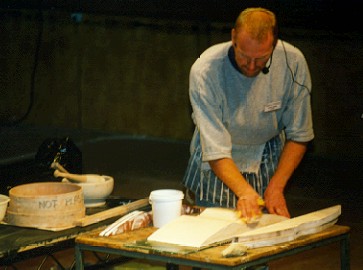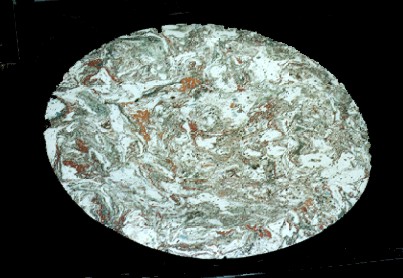
Smoothing off the plaster mold after casting
between two wooden formers.

David pours clay slip with aggregate into his plaster
former
which is surrounded on two sides by timber battons cut to shape.

When the plaster former has dried, it is placed between two more timber formers into which the clay slip aggregate is poured and then tamped and dragged to take the shape of the batton edges.

End view of the cast mold

The two sides of the cast piece before joining.

A Platter made from aggregrate loaded clay slip
which is ground
down to a polished surface after firing.